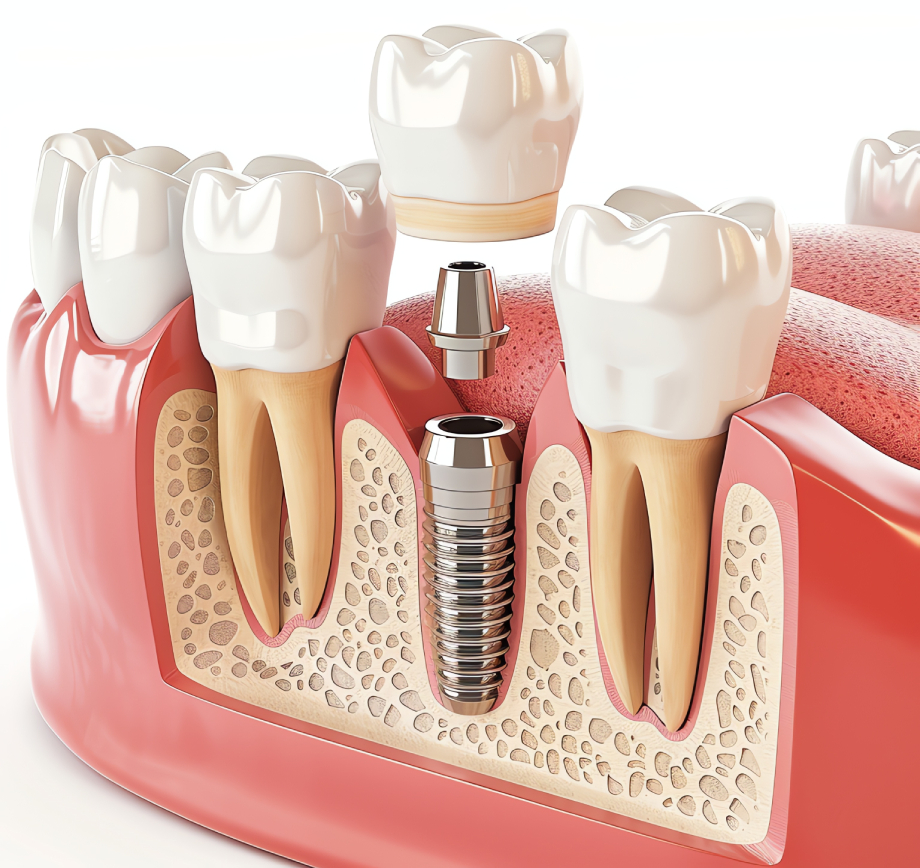- Call Today +91 77408 59500
- Open Hour 10am–1pm, 5–8:30pm

Dental implants are today’s best replacement alternative to missing teeth in terms of form, function, and aesthetics. Implants are now used as routine treatment for an entire range of missing teeth problems from replacing a single tooth to full mouth fix teeth.
Dental Implant Surgery is a highly skilled procedure and the success of this treatment lies in the expertise of the performing Implantologist. Not every dentist has the experience of performing dental implant Surgery & management of potential complications that can occur during surgery.
The dental implant structure comprises three pieces:
Implant dentistry has been rapidly progressing in the last decade, and nowadays, the replacement of the entire teeth in the jaw can be done on 4 to 6 number of implants with a fixed implant supported prosthesis.
The All-on-X treatment concept is a fixed Prosthodontic approach for replacement of the entire upper or lower teeth with a fixed prosthesis on just four to six dental implants.A lot of people are seeking All-on-X dental implants, but not all of them are making informed decisions. All-on-X dental implants are an amazing procedure, but they’re also very complex. In this approach, four to six long angled implants are placed cross arch and the final prosthesis/Implant denture will be screwed on the implants. This approach is mostly advised for individuals who have limited bone available for implant placement and they are not willing or they cannot go for advance bone grafting/sinus floor elevation procedures to get more dental implants.
Spitting, the use of a straw, smoking, and poking the surgical area can dislodge the blood clot that is forming and will cause bleeding from the area. Also, smoking can increase the chances of an infection and future implant failure.
© 2025 The Smile Center. All rights reserved.
